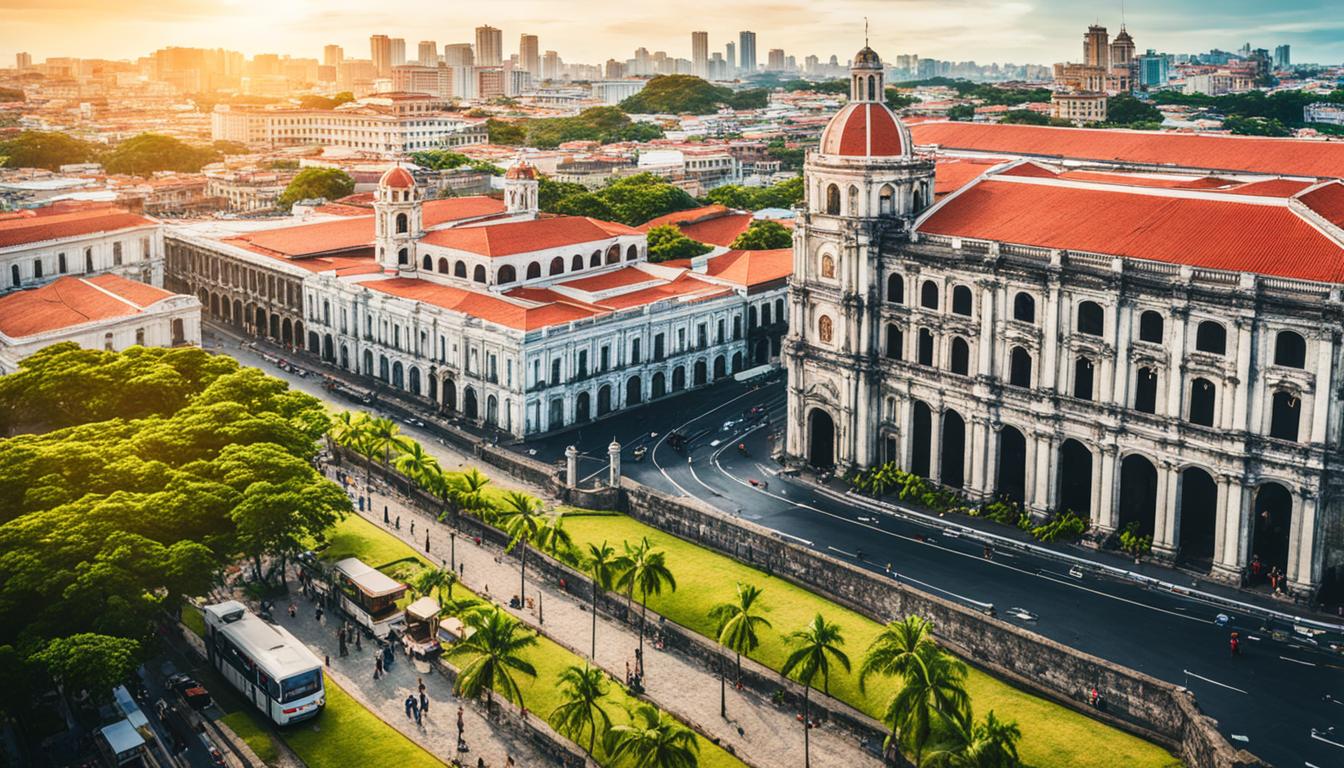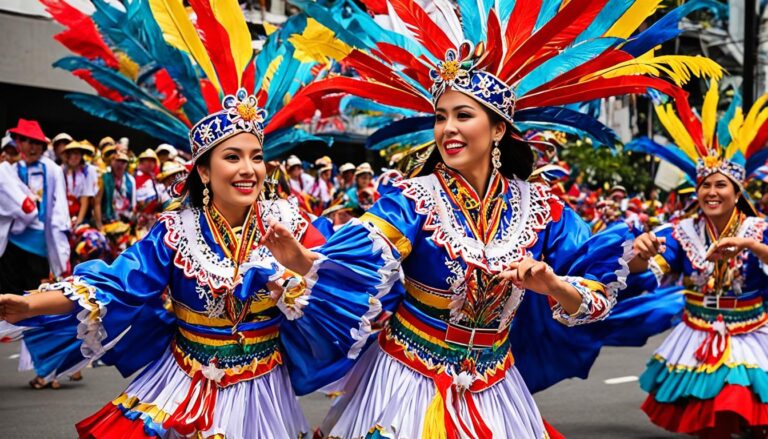Unveiling the Timeless Charms of Historic Sites in the Philippines 🇵🇭
The archipelago nation of the Philippines is not only a tropical paradise but also a repository of rich historical narratives, held within the walls of its many landmark structures. As we delve into the historical landmarks of the Philippines, the multifaceted tapestry of Filipino culture unfolds, revealing tales from precolonial times to the vivid Spanish colonial era. Landmasses etched with history, such as the storied cobblestone streets of Philippine historical sites and the enduring edifices of cultural heritage sites in the Philippines, provide a testament to the nation’s former epochs.
In the heart of Manila lies Intramuros, a cornerstone among the historical sites and monuments in the Philippines. Established in 1571, this walled city was once the epicenter of Spanish sovereignty. Designated as a National Historical Landmark, Intramuros invites visitors to journey through time, surrounded by remnants of power such as Fort Santiago and the San Agustin Church. These sites are not just remnants; they are living chronicles of resilience, having withstood wars and natural disasters to earn their rightful place among the prestigious UNESCO World Heritage Sites in the Philippines.
Exploring Manila’s Intramuros: A Legacy of Spanish Colonial Power
Stepping into Intramuros the Walled City of Manila, one is immediately transported back to an era where the Spanish colonial influence was at its zenith. This historical site in Manila is not only a journey through time but also an intimate encounter with the famous landmarks in Philippines history. The massive stone walls and fortifications of Intramuros have withstood the test of time, preserving the stories of the past within their bounds.
At the heart of Intramuros is the Manila Cathedral, an imposing structure that demonstrates the intricate detail and grandeur of Spanish colonial architecture. Nearby, the fortress known as Fort Santiago stands as a silent witness to the city’s turbulent history, from the Spanish period up to World War II. Not to be missed is the San Agustin Church, the oldest stone church in the country, with its awe-inspiring interior and valuable artifacts signifying its status as a National Historical Landmark.
The bastions and baroque architecture echo the Spanish era’s influence on Filipino culture. Visitors are encouraged to traverse the cobblestone streets and revel in the surroundings that narrate the history of the historical landmarks in the Philippines. Intramuros serves as a living classroom, where each plaza, church, and canon reflect the complexities of Philippine history and invite contemplation on the interweaving of cultures over centuries.
| Landmark | Significance | Architectural Style |
|---|---|---|
| Manila Cathedral | Seat of the Archbishop of Manila | Neo-Romanesque |
| Fort Santiago | Former Spanish military fortress | Spanish Defense Architecture |
| San Agustin Church | Oldest stone church in the Philippines | Baroque |
These carefully preserved sites continue to draw not only international tourists but also Filipinos eager to reconnect with their heritage. As one of the most historically significant historical sites in Manila, Intramuros remains a vivid tableau of the country’s past, serving as a centerpiece for the rich tapestry that is Philippine history.
Historical Landmarks Philippines: Celebrating Heritage Outside the Capital

Stepping outside the bustling streets of Manila, the Philippines reveals a rich tableau of history and culture manifested through its celebrated historical landmarks. From highland terraces that defy modern engineering to the steadfast monuments of heroes and breaths of colonial past that linger in cobblestone streets, these sites beckon travelers and history enthusiasts alike to explore and reflect on the Philippine’s storied past. Here are some of the prominent historical places that make the Philippines a must-visit destination.
The Banaue Rice Terraces: Engineering Marvel of the Ifugao
Carved into the mountains of Ifugao, the Banaue Rice Terraces are a testament to the ancient indigenous engineering skills of the Philippine ancestors. Frequently referred to as the “Eighth Wonder of the World,” these terraced paddies offer breathtaking views and a glimpse into a sustainable agricultural tradition that has endured for millennia. Recognized among the UNESCO World Heritage Sites in the Philippines, the terraces showcase a harmonious relationship between humans and the environment, perpetuated through the diligent care of the Ifugao people.
Rizal Park and the Reverence for a National Hero
In the heart of Manila lies Rizal Park, also endearingly known as Luneta Park, a historical urban park dedicated to Philippine independence. The park is named after the revered national hero, Dr. Jose Rizal, whose influence on the nation’s history is memorialized where he was executed, igniting the Philippine Revolution. Today, the park serves as a popular tourist attraction in the Philippines, drawing crowds to its gardens, monuments, and museums, celebrating the spirit of freedom and the people’s respect for their heritage.
Corregidor Island: A Crucible of War and Bravery
Situated at the mouth of Manila Bay, Corregidor Island stands as a living museum, chronicling the heroic stand of Filipino and American soldiers during World War II. It features significant wartime landmarks such as the Pacific War Memorial Museum and the Filipino Heroes Memorial. The island is a powerful reminder of wartime courage and has been etched into the collective memory as one of the most poignant historical sites in Philippines.
Calle Crisologo in Vigan: A Colonial Time Capsule
Calle Crisologo in Vigan transports visitors to the Spanish colonial period through its well-preserved architecture and old-world charm. Part of Vigan’s designation as a UNESCO World Heritage Site, this area is abundant in historical landmarks in Vigan, with ancestral houses lining the streets, offering a unique glimpse into the Filipino lifestyle during the colonial era.
| Historical Landmark | Location | Significance | Recognition |
|---|---|---|---|
| Banaue Rice Terraces | Ifugao Province | Agricultural and engineering marvel | UNESCO World Heritage Site |
| Rizal Park (Luneta Park) | Manila | Tribute to Dr. Jose Rizal and Philippine independence | Historical urban park |
| Corregidor Island | Manila Bay | World War II historical site | National shrine |
| Calle Crisologo | Vigan, Ilocos Sur | Preservation of Spanish colonial architecture | UNESCO World Heritage Site |
Conclusion
The exploration of the Historical Landmarks of the Philippines is indeed a reflective and enlightening journey through the country’s rich history and culture. Sites such as the time-honored Intramuros, the verdant Banaue Rice Terraces, the inspirational Rizal Park, and the wartime stronghold of Corregidor Island each tell a tale of the Filipino spirit. These iconic locations are more than just some of the most popular tourist attractions in the Philippines; they stand as testaments to the ingenuity, resilience, and courage that characterize the nation’s past.
As vibrant components of the nation’s cultural heritage, these sites command honor and admiration. They serve as living classrooms where history is preserved and shared with the world, fostering a sense of national pride among Filipinos. It is this pride that resonates with both locals and visitors alike as they traverse through the various historical landmarks and delve into the stories that shaped a nation.
Philippine historical sites, especially those recognized as UNESCO World Heritage Sites in the Philippines, provide an unmatched lens through which one can appreciate the intricacies of exploring the Philippines. It is through wandering amidst these monumental relics and scenic beauties that one gains a profound connection to Filipino culture and an enhanced understanding of its place within the global mosaic. The journey through these cultural heritage sites leaves an indelible mark on the hearts and minds of those who experience the archipelago’s storied past and enduring legacy.







